Back in Tucson the XWCL team has been very busy hosting some exciting visitors! Teams from the Giant Magellan Telescope Organization and the Arcetri Astrophysical Observatory made their way down south to integrate a natural guide star wavefront sensor prototype (NGWS-P) with HCAT and MagAO-X. To put it simply:
“The Giant Magellan Telescope (GMT) Adaptive Optics (AO) systems feature a single conjugate natural guide star based AO system using the 7 deformable secondaries and a post focal wavefront sensor named NGWS (Natural Guide star Wavefront Sensor). The NGWS has two different channels: one featuring a high spatial sampling pyramid sensor dedicated to the fast frame rate correction of atmospheric turbulence and a second dedicated to the correct phasing of the 7 segments of the GMT telescope.”
Plantet, et al., SPIE Montréal 2022
Essentially, they want to use our GMT simulator (HCAT), and functioning ExAO system (MagAO-X) to validate their prototype wavefront sensing channel (PyWFS) and prototype phasing channel (HDFS).
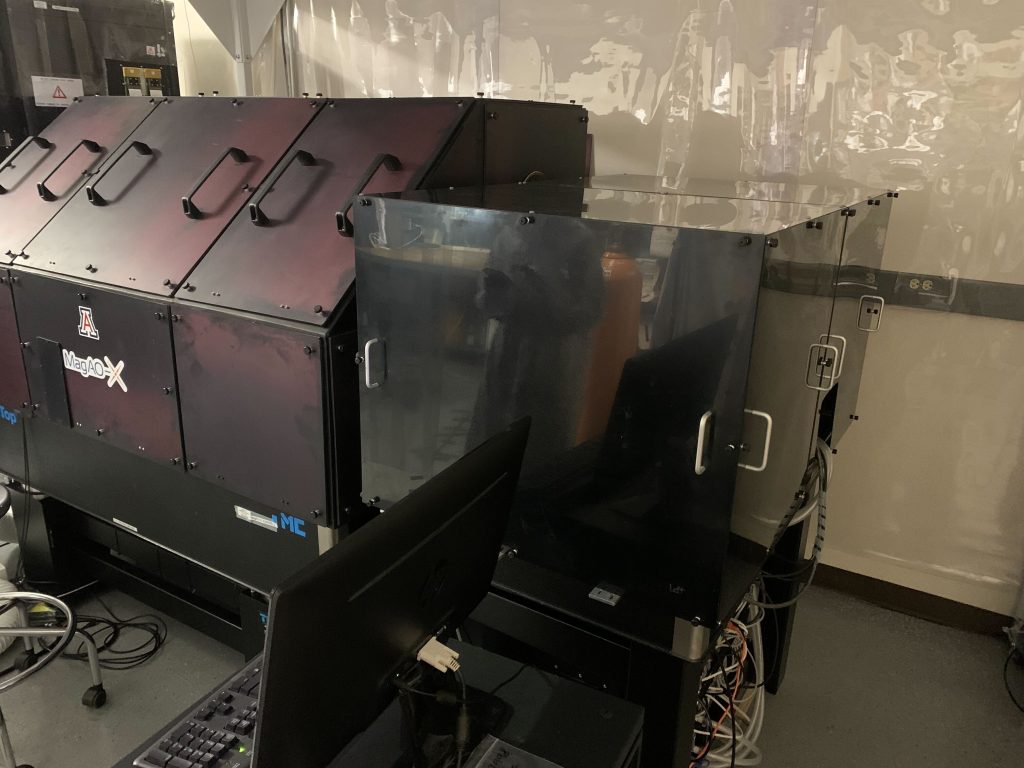
I want to impress on everyone reading this blog what a complicated setup this actually is. We are simulating the GMT on the HCAT testbed, feeding the GMT pupil into MagAO-X through a hole in a wall, and feeding the NGWS-P testbed through the MagAO-X eyepiece. That is not easy to do…but we did it!
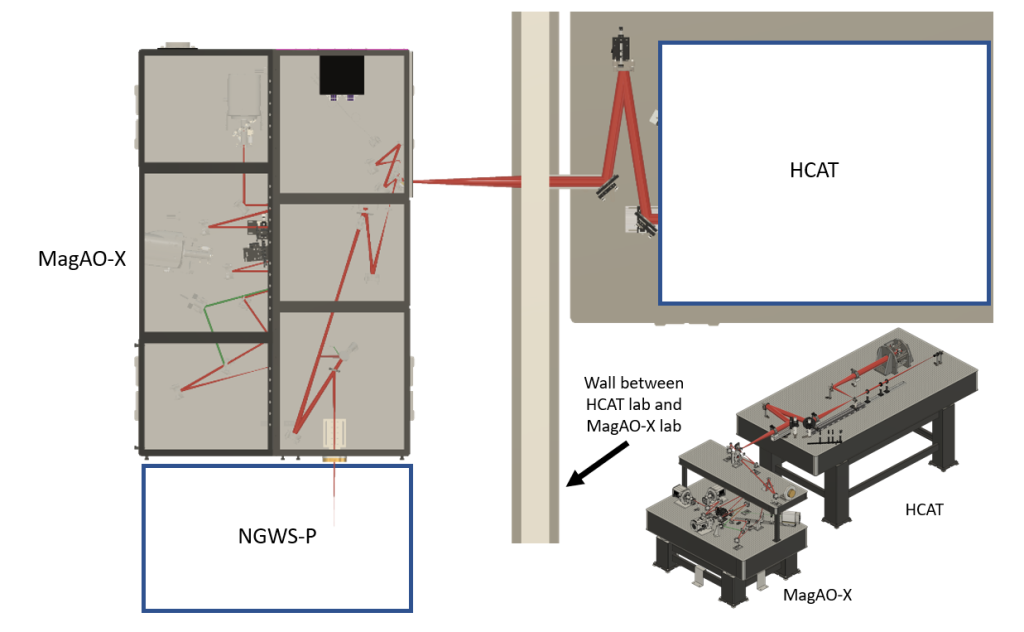
The team started by using the HCAT lab as a staging area where the teams could integrate the two channels onto the NGWS-P bench. Laird and I were busy inventing new novel optomechanical mounting strategies (AKA zip tying a camera to a ladder) so we could view the focal plane the NGWS-P will be receiving.
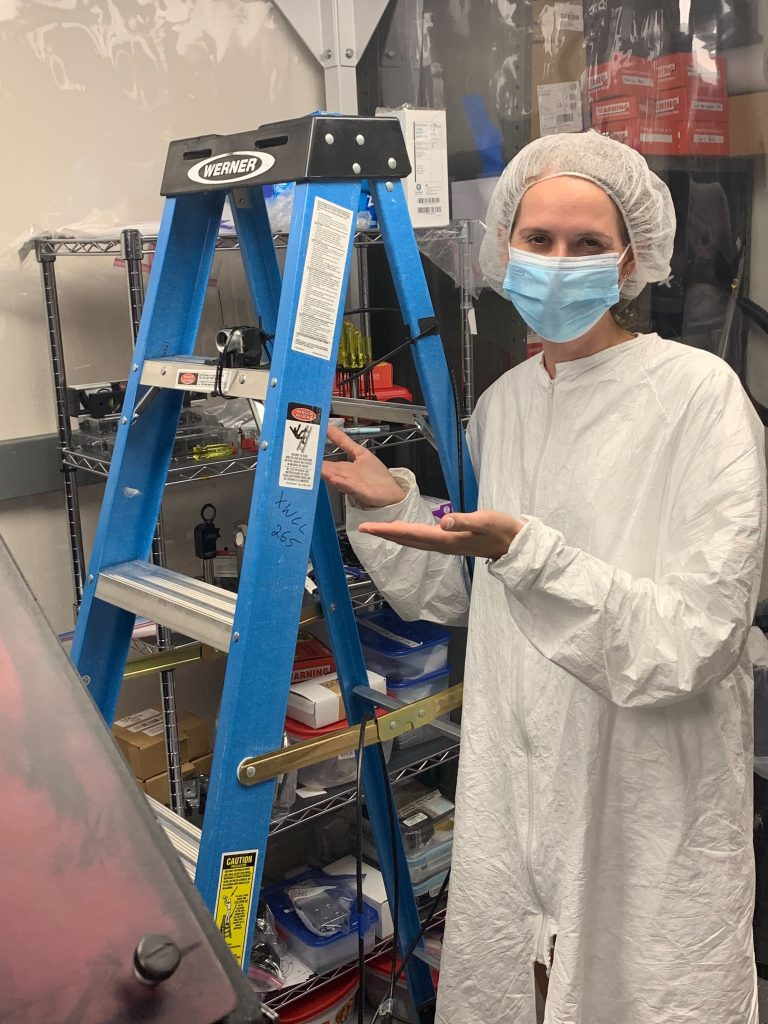
to NGWS-P
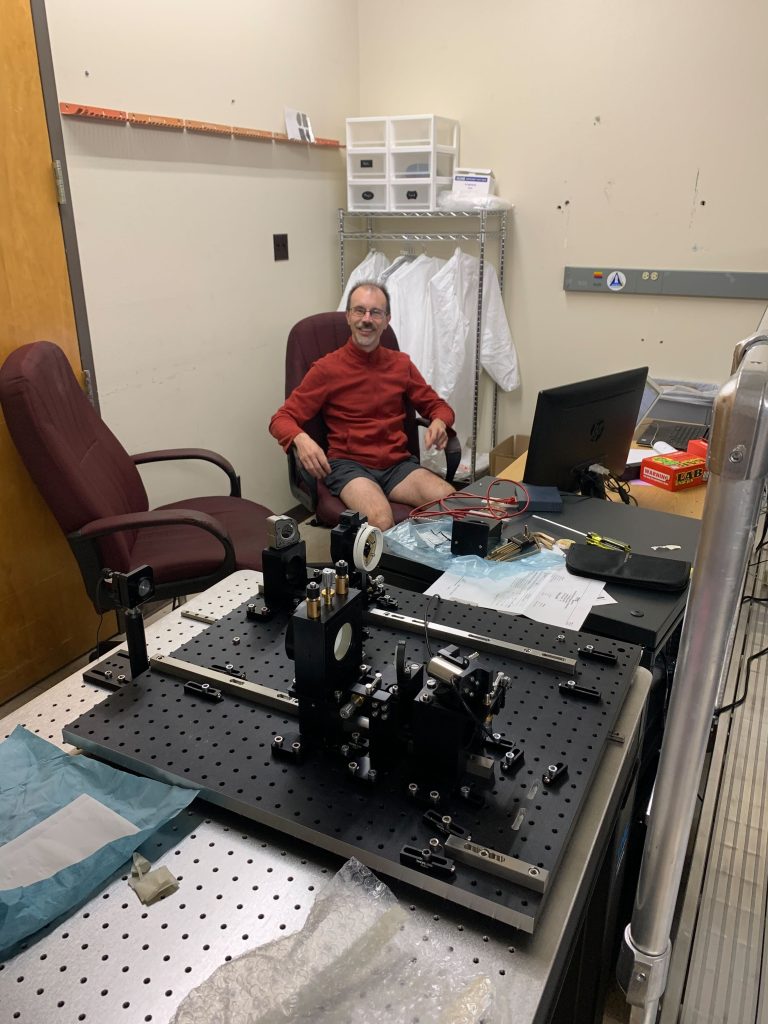
Once the dress rehearsal was over, we rolled the NGWS-P into the MagAO-X lab and the team went quickly into alignment.
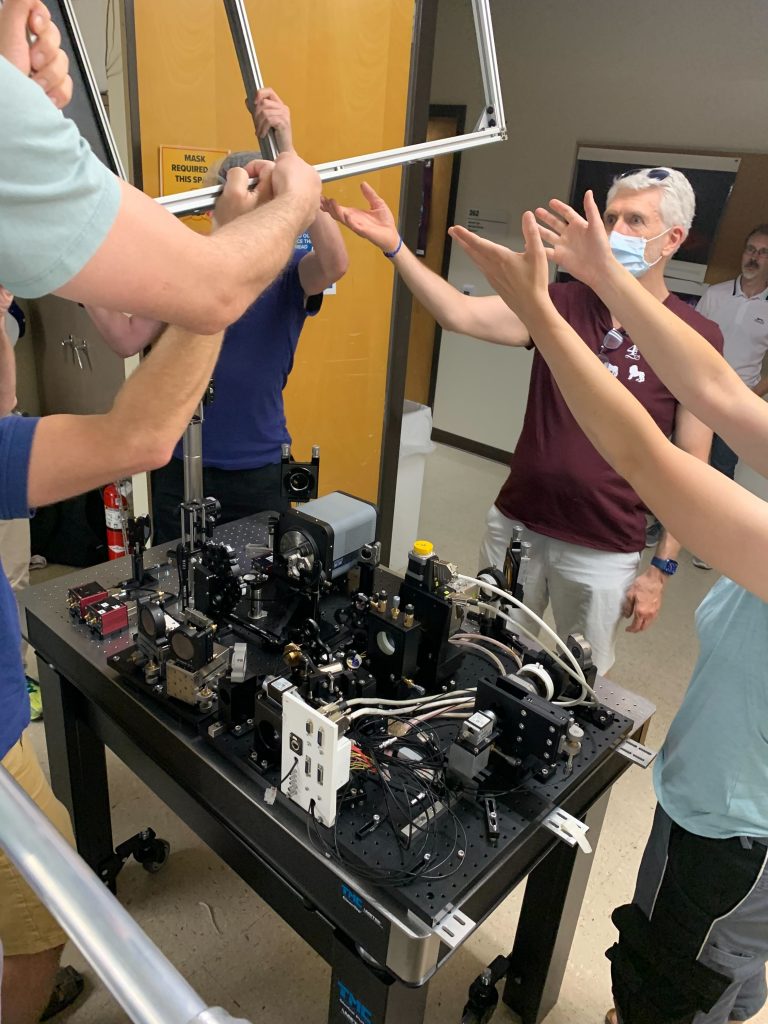
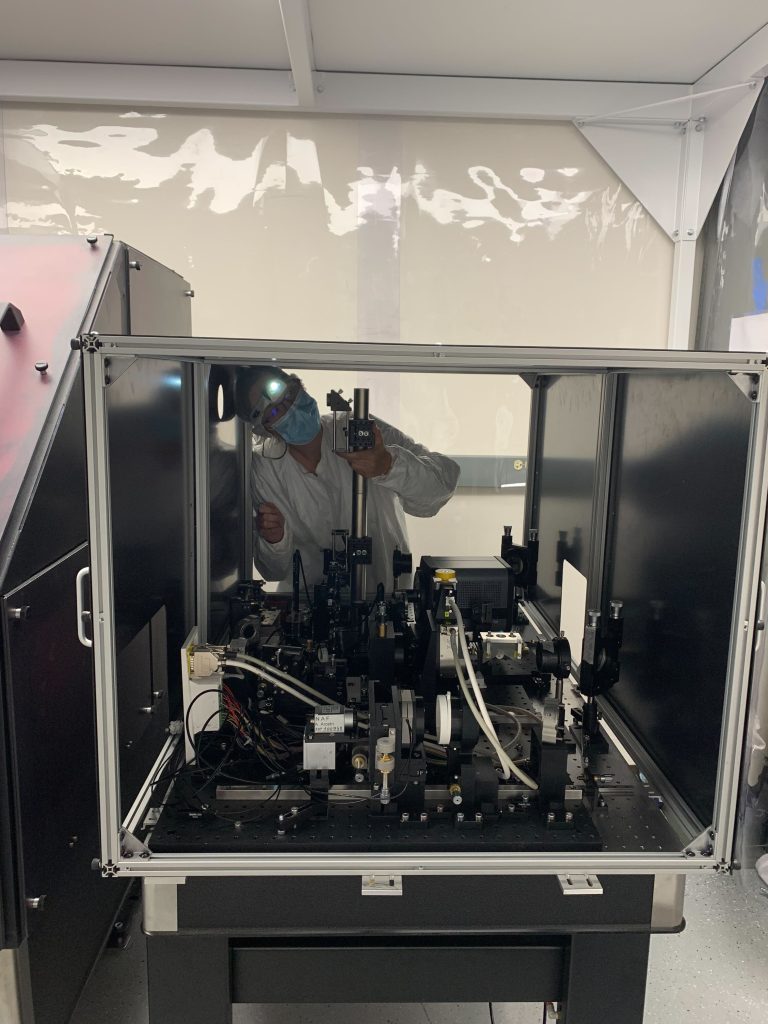
As the life-long learners we are, when plugging in the NGWS-P cryocooler we unfortunately tripped a circuit breaker and MagAO-X went dark. Duh, duh, duh…Luckily we called our most recent alum Dr. Joseph Long to the rescue!
Don’t worry, it’s all fine. We learned the lesson: if you ever want to force-quit MagAO-X, simply plug in a cryocooler on the same circuit.
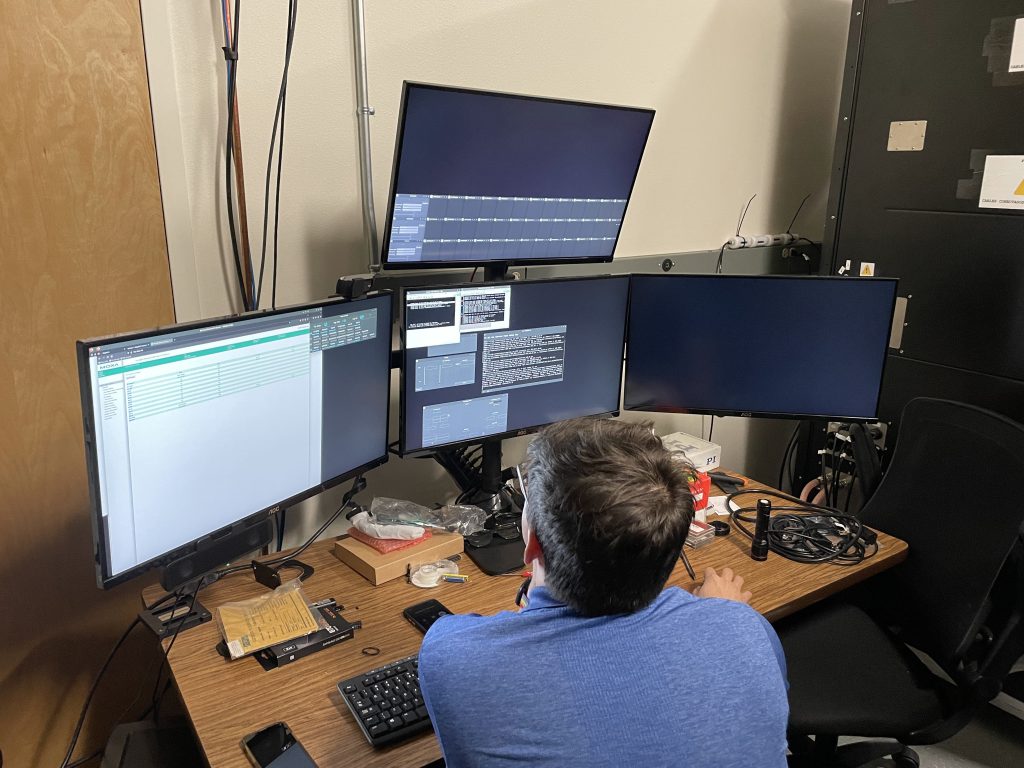
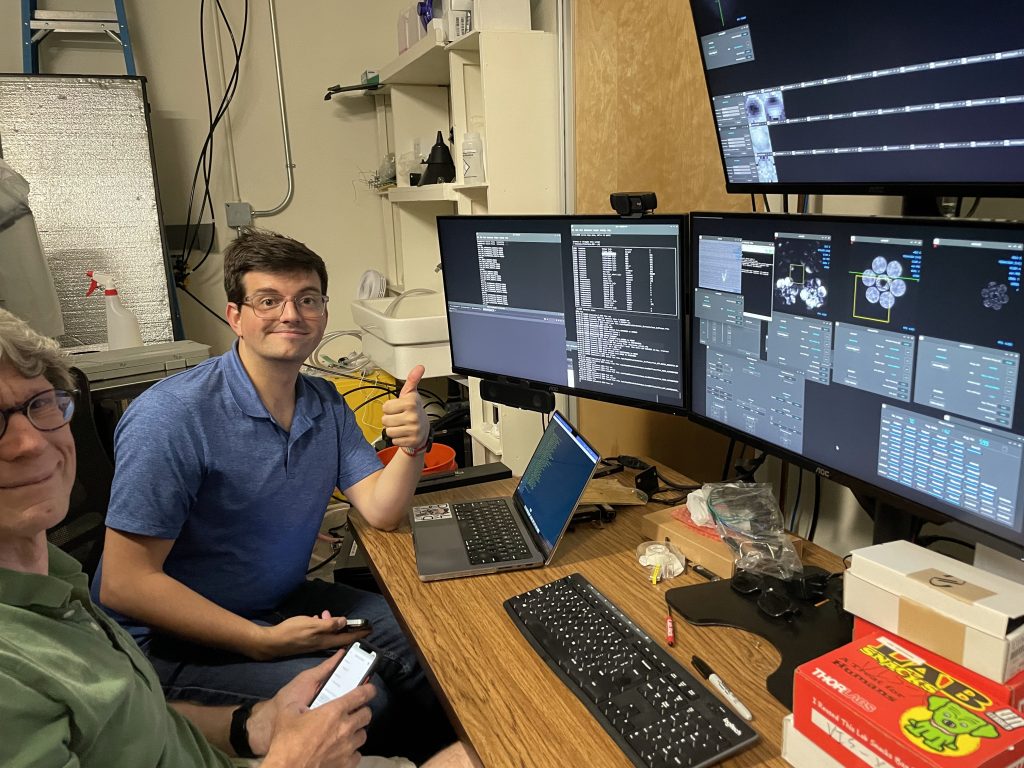
The software gurus started to make some quick progress once the whole system was finally in place. Alfio (Arcetri) and William (GMT) were poking away at the MagAO-X DMs using their own wavefront sensor.
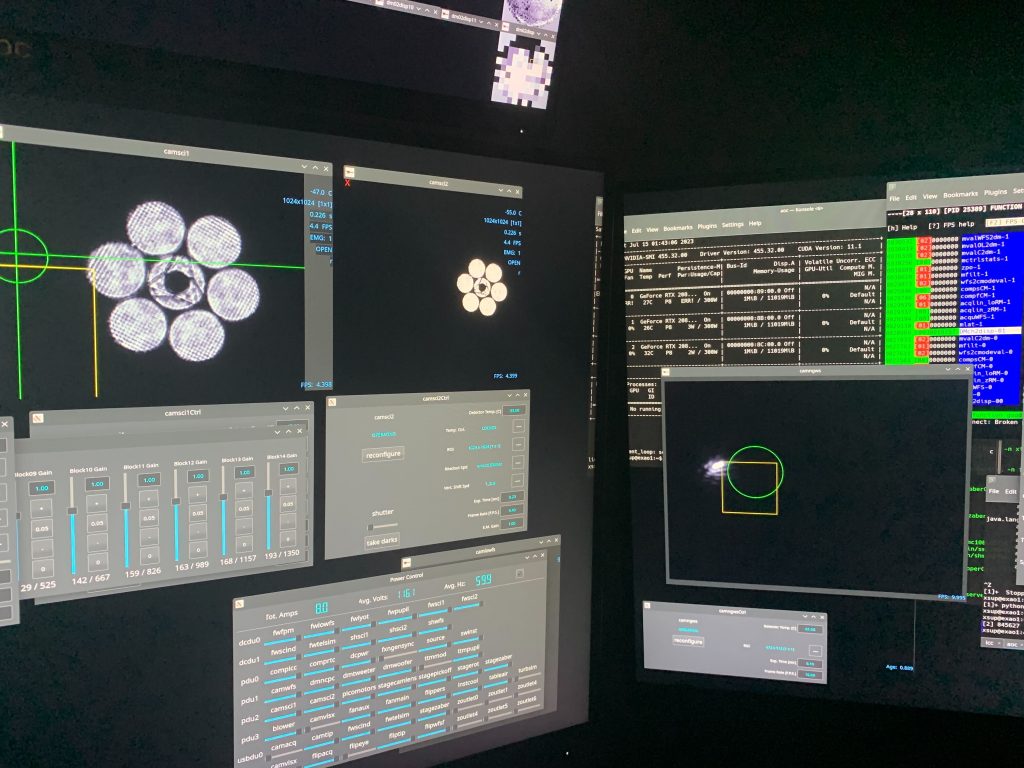
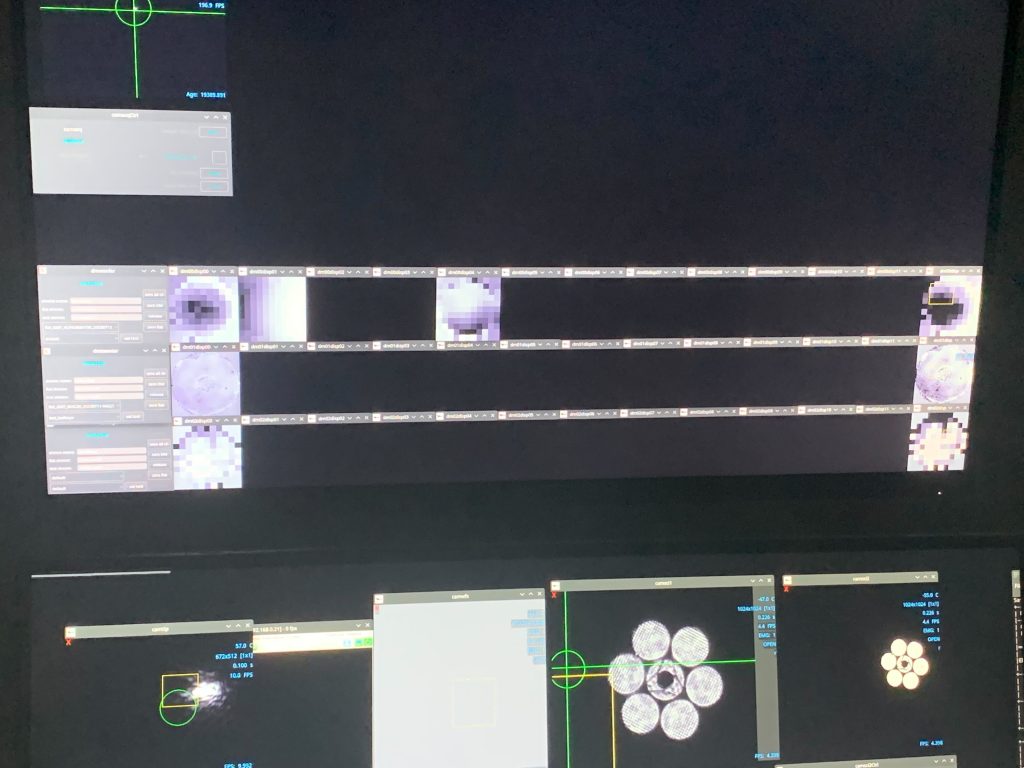
Ultimately they were able to close the loop using the NGWS-P modulated PyWFS and the MagAO-X Woofer DM with 30 modes! This was a fantastic first run and there is much more exciting work to be done in our subsequent two runs coming this fall. Looking at you parallel DM.
Sharing this musical experience that the GMT, Arcetri, and Arizona teams got to enjoy at Hotel Congress last Friday evening.